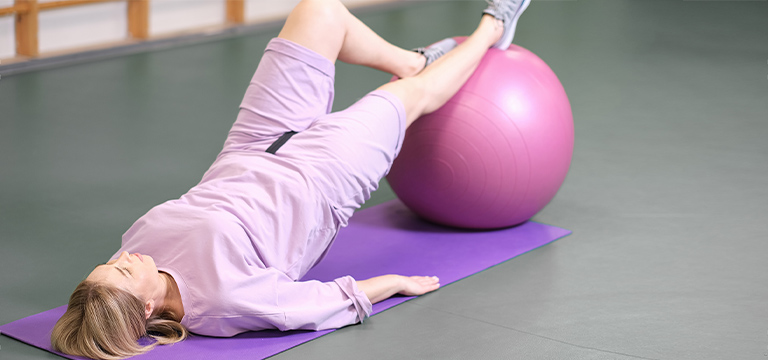An Intro to Pelvic Floor Exercise

Everyone has a pelvic floor—and for good reason. This group of muscles and connective tissue is attached to your pelvis and helps support your pelvic organs.
Your pelvic organs include the bladder, urethra, rectum, anus, prostate, uterus, cervix, vagina and intestines. Your pelvic floor helps regulate and control your bladder and bowel. These muscles also help stabilize your hips and bottom while standing and walking.
However, as you age, your pelvic floor tends to weaken which could lead to problems, including pain and pelvic organ prolapse. While more common in women, men do experience pelvic floor issues. About 15% of men experience pelvic floor issues. One estimate shows that one in four women experience pelvic floor dysfunction. But that number could easily double during childbearing years.
Other symptoms of pelvic floor dysfunction include:
- Fecal or urinary incontinence
- Urinary leakage
- Overactive bladder
- Constipation
- Pain during sex
- Pelvic muscle spasms
Now, the good news! Through this simple exercise, you can strengthen your pelvic floor muscles, reducing your chances of having problems down the line. You can do this at any time and place.
You can do this lying flat on the floor or sitting with a good posture. Follow these steps:
- Before you start, be sure to empty your bladder.
- Now, tighten your pelvic floor muscles and hold for a count of 10. If you can’t make it to 10, start with a lower number.
- Relax your pelvic floor muscles completely and count to 10.
- Aim for 10 sets, 3 to 5 times a day (morning, afternoon, and night).
Experts suggest one more thing. When you are most likely to leak, such as getting out of a chair, try doing a single pelvic floor contraction.
Also, be careful to avoid over-exerting yourself. In other words, consistent exercise is better than intense exercise, and you can expect to feel some improvement after 4-6 weeks. But, for some people, it could take up to three months before noticing major changes.
There are several additional pelvic floor exercises that are effective at strengthening this group of muscles. Before trying them, be sure to talk to your doctor. They will be able to help target exercises that will benefit your specific anatomy.
Dial in Your Health with Telehealth
Experienced help is just a few clicks away. Through our partner Teladoc®, we’re able to offer 24/7 access to care. This means board-certified doctors are ready for your call when you need it most. Click here to learn more about how to access the care you need.


